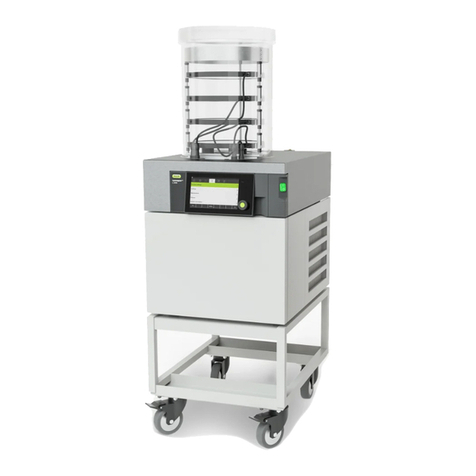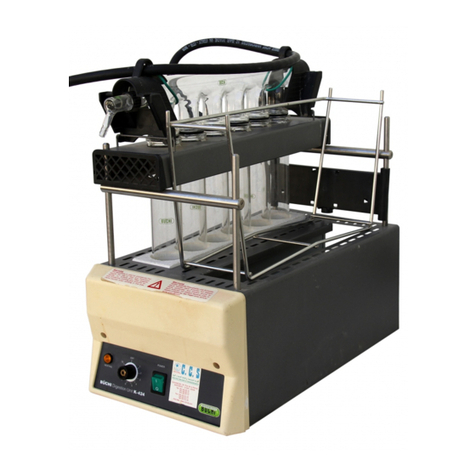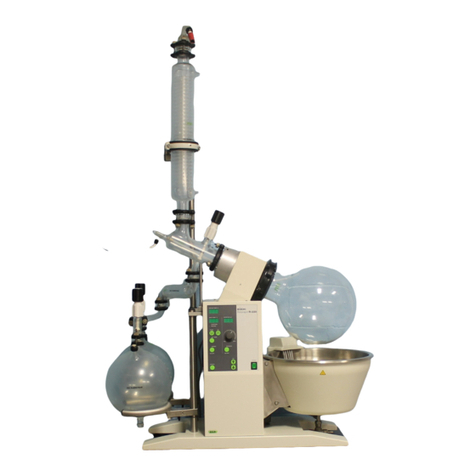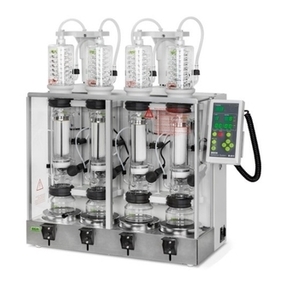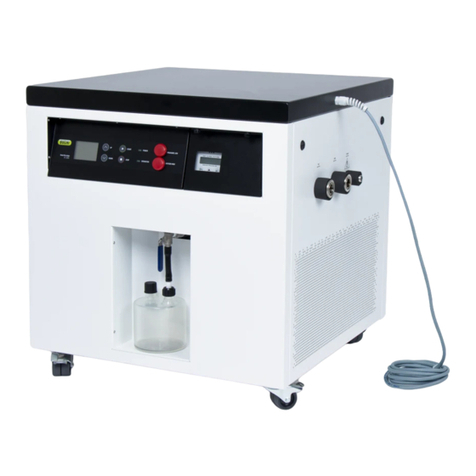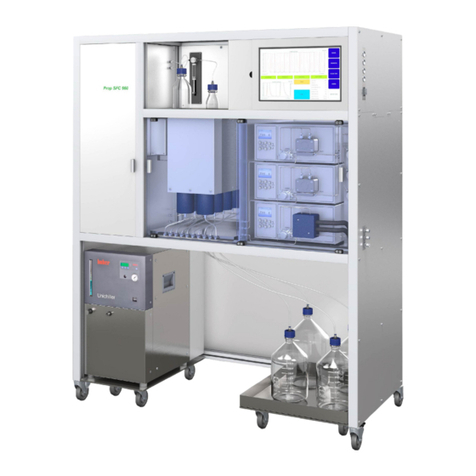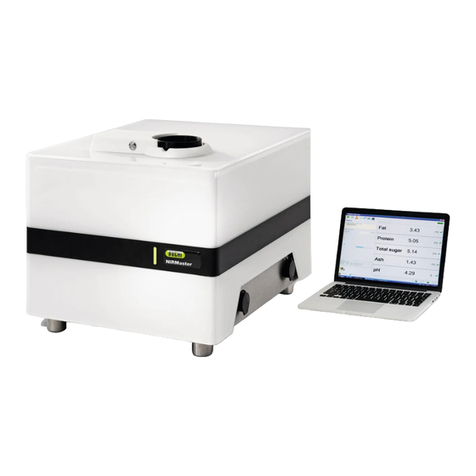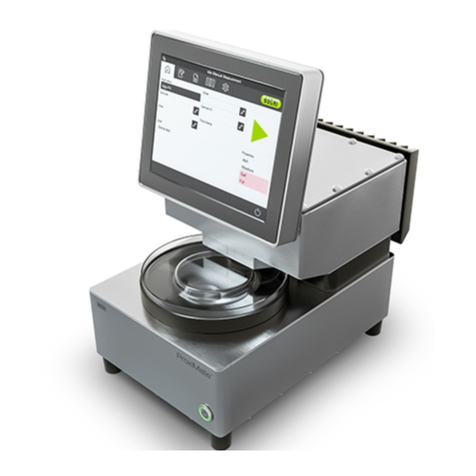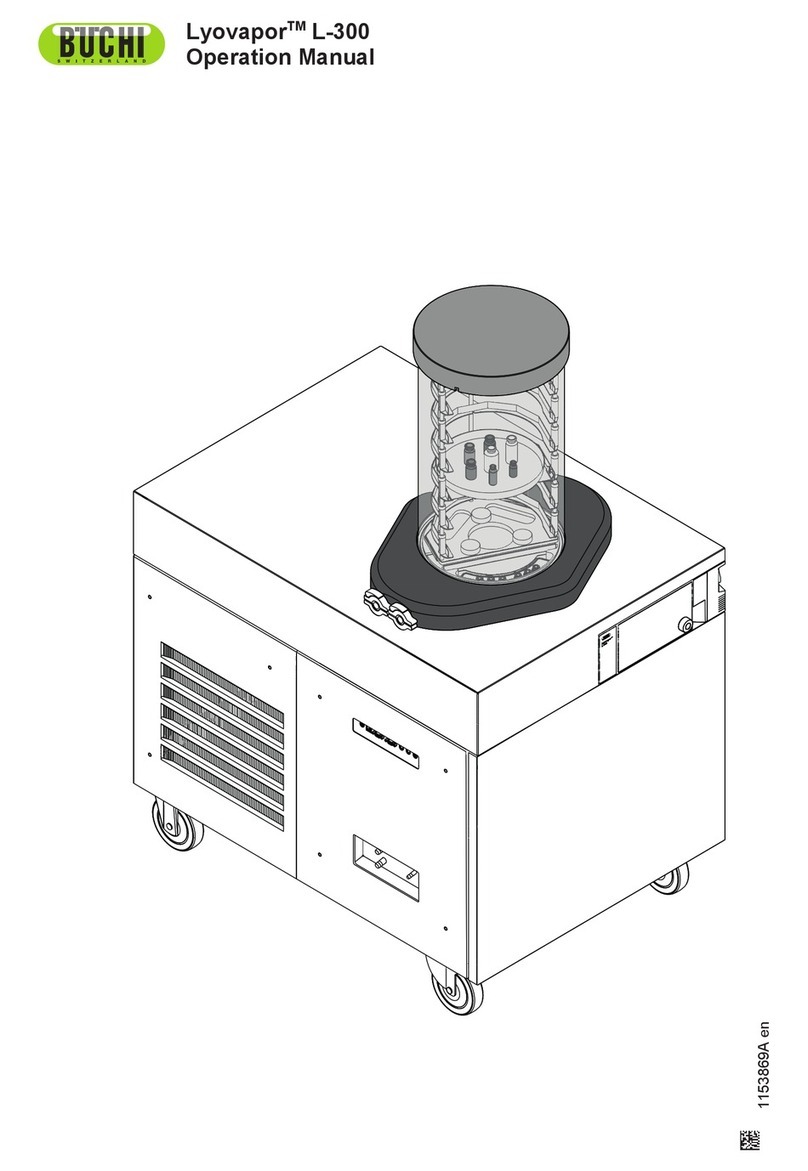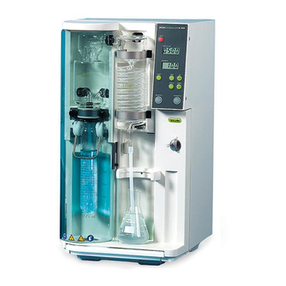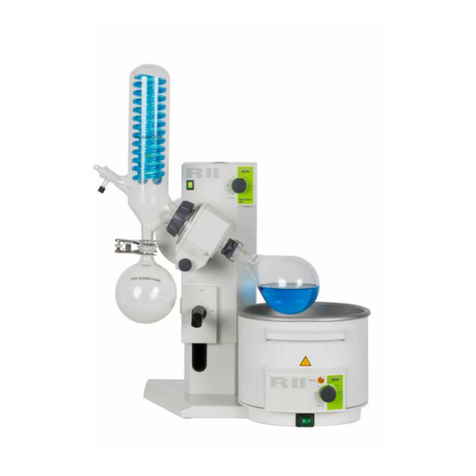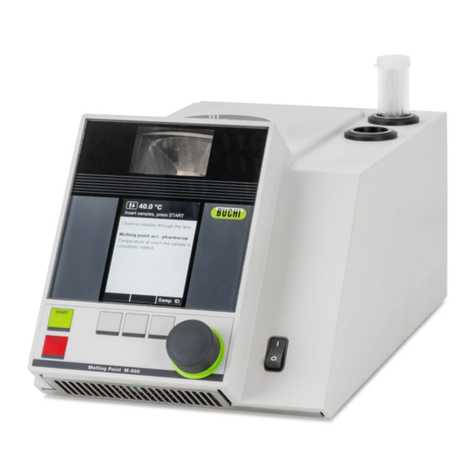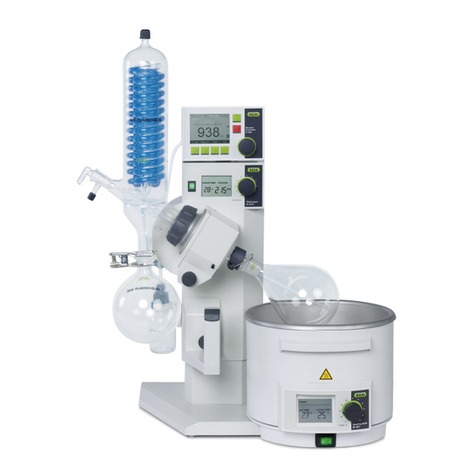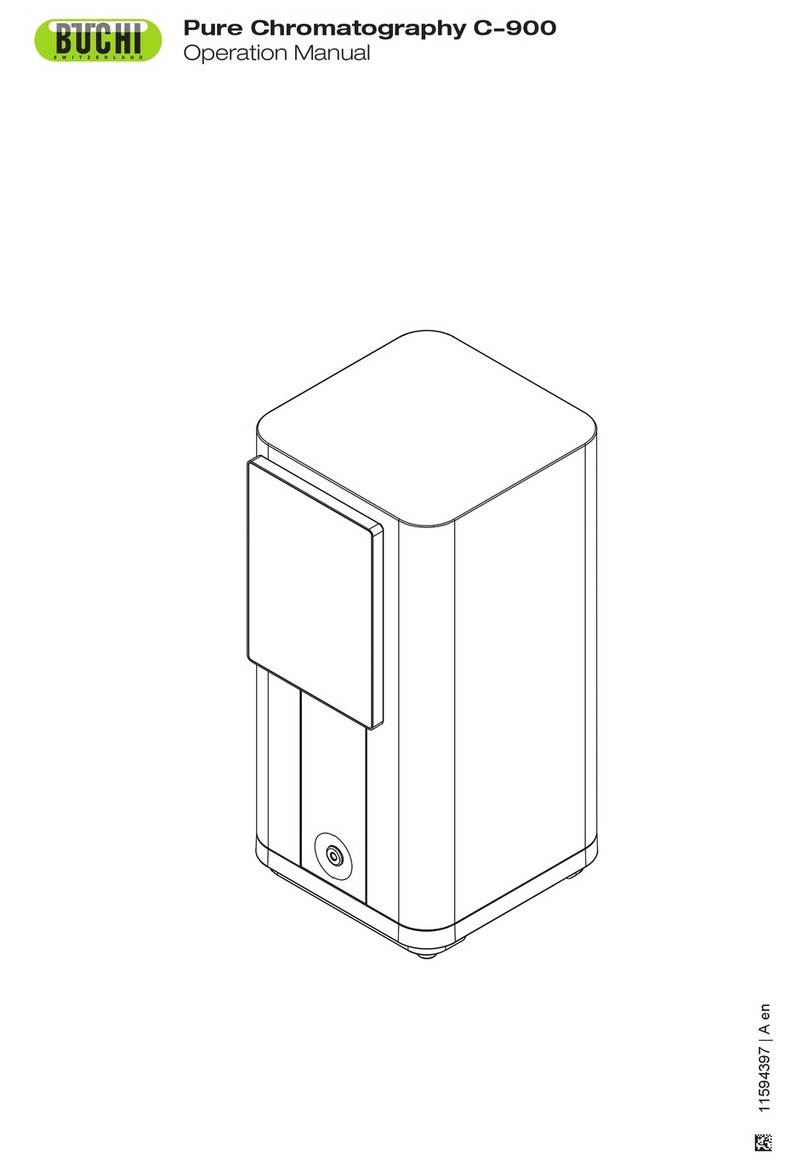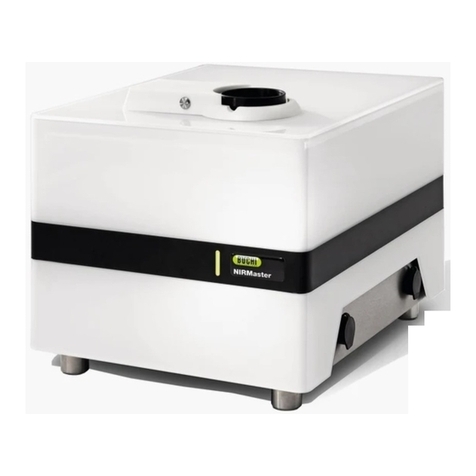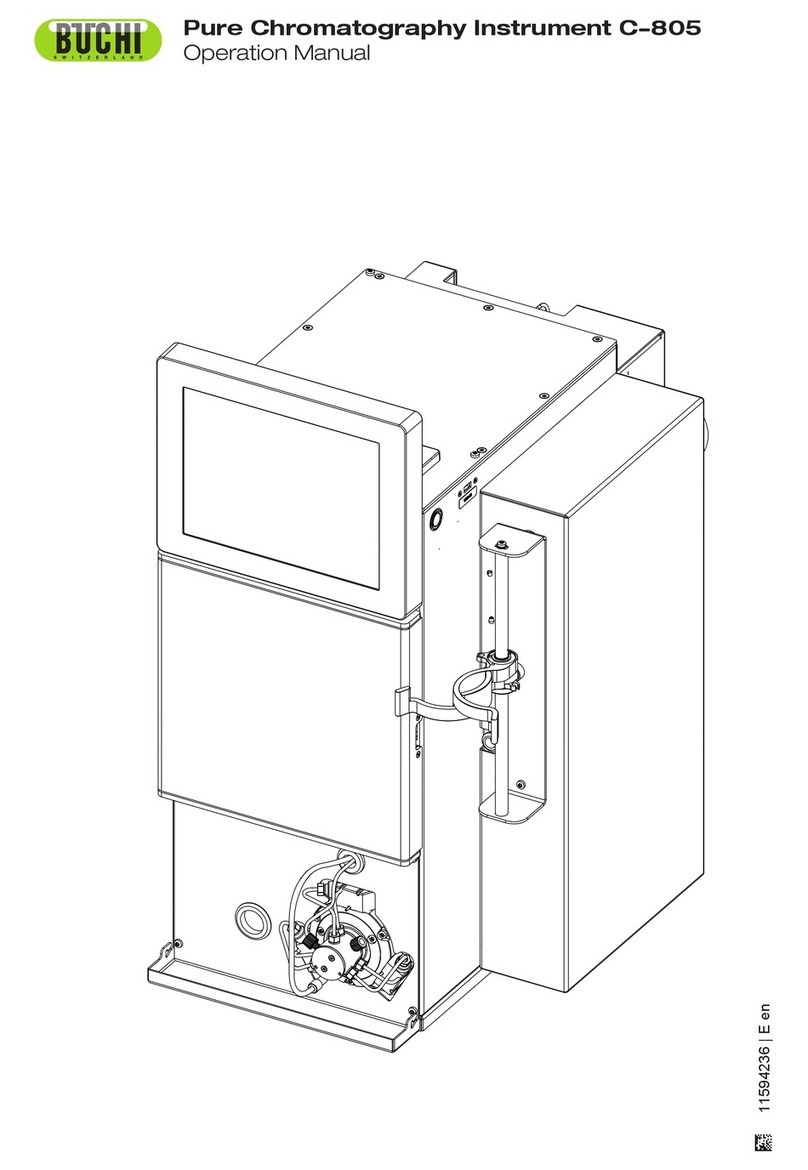
Table of contents Büchi Labortechnik AG
iv Operation Manual Rotavapor® R-250Ex
5 Installation........................................................................................................................................ 19
5.1 Installation site................................................................................................................................... 19
5.2 Before installation .............................................................................................................................. 19
5.3 Establishing electrical connections.................................................................................................... 19
5.4 Securing against earthquakes ........................................................................................................... 19
5.5 Installing the support rod ................................................................................................................... 20
5.6 Installing the glassware ..................................................................................................................... 20
5.6.1 Glassware assembling instructions......................................................................................20
5.6.2 Installing the inlet valve (example).......................................................................................23
5.6.3 Installing the distribution piece (example)............................................................................23
5.6.4 Installing the glass assembly R (option) ..............................................................................23
5.6.5 Installing the glass assembly D (option) ..............................................................................24
5.6.6 Installing the double receiver ...............................................................................................25
5.6.7 Installing the single receiver (option) ...................................................................................25
5.6.8 Connecting the receiver with the glass assembly (example) ...............................................26
5.7 Installing the vacuum supply.............................................................................................................. 26
5.7.1 Installing a non BUCHI vacuum pump (option)....................................................................26
5.7.2 Installing the vacuum connection glass assembly R (option) ..............................................27
5.7.3 Installing the vacuum connection glass assembly D (option) ..............................................28
5.8 Installing the cooling water supply..................................................................................................... 28
5.8.1 Installing the cooling water supply with a recirculating chiller (option).................................28
5.8.2 Installing the cooling water supply without a recirculating chiller (option)............................29
5.9 Heating bath installations................................................................................................................... 31
5.9.1 Heating medium...................................................................................................................31
5.9.2 Installing the heating bath replenishment (option) ...............................................................31
5.9.3 Installing the drain connection at the heating bath...............................................................31
5.10 Installing the sensors......................................................................................................................... 32
5.10.1 Installing the vapor temperature sensor...............................................................................32
6 Interface............................................................................................................................................ 34
6.1 Layout of the interface ....................................................................................................................... 34
6.2 Setting the maximum setpoint temperature....................................................................................... 35
6.3 Setting the option for automatic lowering of the bath in the event of a power failure ........................ 35
6.4 Vacuum controller.............................................................................................................................. 36
7 Operation.......................................................................................................................................... 42
7.1 Preparing for an evaporation ............................................................................................................. 42
7.1.1 Installing and removing the evaporation flask......................................................................42
7.1.2 Operating the inlet valve ......................................................................................................43
7.1.3 Preparing the heating bath...................................................................................................44
7.1.4 Draining distillate..................................................................................................................44
7.2 Carrying out an evaporation .............................................................................................................. 44
7.2.1 Preparing the instrument......................................................................................................44
7.2.2 Starting an evaporation........................................................................................................45
7.2.3 Task during an evaporation .................................................................................................45
7.2.4 Ending an evaporation .........................................................................................................45
7.2.5 Shutting down the instrument ..............................................................................................45
8 Cleaning and servicing ................................................................................................................... 46
8.1 Regular maintenance work................................................................................................................ 46
8.2 Replacing the vacuum seal................................................................................................................ 46
8.3 Replacing the evaporation flask seal................................................................................................. 47
8.4 Installing the vapor duct..................................................................................................................... 48
